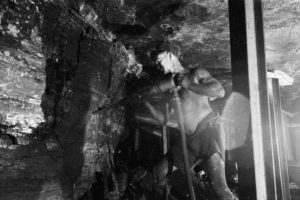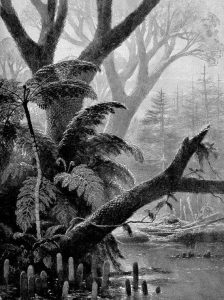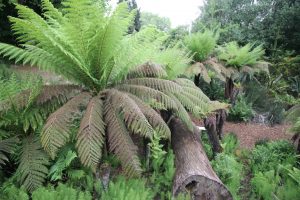By Andy Winfield

In early November this year, myself and my wife went to the Welsh National Coal Museum also known as the Big Pit. It’s a great visit, looking at the working practices over the years of digging up this material that’s been locked underground since the Carboniferous period. Part of the experience is to go down into the mines, down in the lift, and look at the coal seams. The walls of glittery blackness were shimmering under the light of our head torches. We learned how coal is hard to get to, it requires a lot of ingenuity and effort to get it back to the surface; a surface that it hasn’t seen for many millions of years. Due to its importance in feeding the insatiable monster called progress, coal was a huge industry for many years; an industry we now know with certainty was a driver in changing the planet’s climate. But what is coal, and why is it so bad?

Coal isn’t like a normal fossil, coal is mostly plant based, a relic of early plant expansion during the carboniferous period, 300-350 million years ago. This was a time of swampy forests and wet woodlands, enormous trees with their feet in water, a rich and varied flora that had only just discovered itself. Plant life had spent many millennia crawling along rocks in the form of liverwort or mosses, making small adaptations that would ultimately lead to the evolution of a vascular system, a way of moving food and water up and down. This enabled plants to begin growing tall, spreading spores wide and dominating the land; plants excitedly expressed themselves, and made the earth green for the first time. Ours is now a verdant balanced planet that creates and maintains life, a unique quality in our solar system.
Throughout earth’s history, every plant that has existed needs the same elements; light, water, and air to make food; unused oxygen is released back into the atmosphere as a by-product and the cycle of plant/animal symbiosis establishes. Carbon is stored in the plant until it dies, when microbes decompose plant matter and combine the trapped carbon with oxygen in the air, and so a balance is reached; what a plant takes, it gives back. As it happens, the Carboniferous period’s swampy woodlands weren’t conducive to this decomposition process. Plants crashed into the swamps when they died, lying on top of each other together with all manner of plant material and so created an anaerobic situation, similar to peat bogs. No air or microbes could get in, and, as we know from peat bog people, not much decomposes under there. So for 50 million years layer on layer of forests built up across tropical regions of the planet, unable to decompose and unable to release their trapped carbon into the air.
As a result, the atmospheric balance was tilted, oxygen levels rose from 20% (around todays levels) to 35%. The abnormal oxygen levels had a huge impact enabling some organisms to thrive, such as the giant dragonfly meganeura or arthropleura the giant millipede, while also causing enormous fires and adding further to the carbon stockpiles forming under the marshy forest floors. The biggest consequence of high oxygen levels was the cooling of the earth causing the tropics to collapse; imagine the piles of dead trees and devastated forests.

The ebb and flow of the earth finding balance, adjusting, and finding balance again continued above ground; dinosaurs evolved and were crashing around, flowers were developing on early species such as magnolia, changing the face of plants forever. While under their feet and roots yesterday’s forests were trapped under the solidifying rock, the peaty swamps were becoming black seams of trapped carbon that never achieved the balance it was supposed to, like a pandora’s box it sat there, holding on to long forgotten earthly elements.
Then along came us. We are a sophisticated species who have learned how to go beyond survival, to find comfort using the tools at our disposal. We search the earth, above and below, to take without giving back, all in the name of ‘progress’. We now know that taking from the earth is problematic; all of the tons of carbon that was drawn into plants 350 million years ago for a period of 50 million years, is stored in all the coal seams on the planet. We have them in Bristol, under my house in Windmill Hill; it’s good to know that many years ago Bedminster was a swampy rainforest as well as other areas of the UK. But as a sophisticated species, we also know that our comfort imbalances the earth, that coal is a monster from the deep that shouldn’t be woken, and that trapped carbon should stay trapped.

